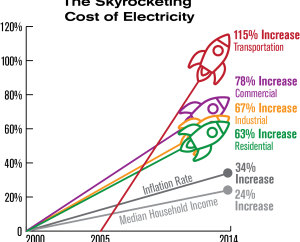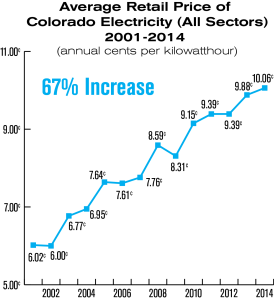
The industry of utility companies is changing. Traditional utilities have lost profits and consumers as a result of renewable portfolio mandates, net energy, behind-the-meter storage, and other distributed generation alternatives. Although there is no solution, power rate structures must be altered to facilitate a smooth transition.

In the past, all electricity supplies were combined into a single volumetric fee. Customers may be encouraged to reduce their dependence on conventional utilities in the long term by policy and technological trends. Utilities will lose customers unless their prices and offers are updated.
Volumetric pricing caused a mismatch between power rates and utility expenses. As a greater proportion of electricity is generated by renewables, utilities must maintain adequate operational flexibility. Customers are perplexed as to why their costs are increasing considering minor changes in consumption and service level.
All the main stakeholders’ objectives were met by paying customers per kilowatt-hour of using it. Without major rate hikes, utilities were able to recover their expenses and infrastructure investments. As a result, many are perplexed by their bills. Rate-design reforms must begin immediately if utilities are to handle the issues that will arise over the next decade.
Principles of Rate Design Reform
It investigated the flexibility and durability issues underpinning decarbonization. A significant change in Energy Rates design is required to enable this transformation. An improved rate design should match prices with system-wide costs, encourage flexibility, and accommodate customers’ diverse needs.
1. Ascertain that the rate structure corresponds to the cost structure.
As the use of renewable energy grows, fixed expenses are becoming a larger fraction of the price of grid funding. Renewable sources, unlike fossil-fuel generation, also have no fuel expenses and no operating and maintenance costs. Renewable energy sources are likewise intermittent, necessitating greater grid adaptability.
Utilities have spent a lot of money to update grid assets. The residual volumetric customers are stuck with a disproportionately large quantity of fixed costs. Distributed generation, behind-the-meter storing, as well as other DERs will be encouraged if system-level cost breakdown is accurately reflected.
Utilities can set a fixed charge and a demand charge element that corresponds to real grid expenses. Many residential and retail rates already include these elements. It’s crucial to think about how regulators will react to any suggested energy rates structure modifications. According to direct experience, huge increases in permanent and request costs are frequently rejected by utility commissions.
2. To promote flexibility, use rate hierarchies.
Load shaping via energy rates is a first step towards solving systemic flexibility requirements by lowering the altitude of an afternoon peak and minimising the requirement for fast-ramping generating capacity. The cost of production of generating and distributing power fluctuates dramatically from moment to moment, season by season, and between grid sites.
Regardless of geography, most consumers pay the same amount during the day. This does not deter inefficient energy use during peak hours. Time-of-use (TOU) prices for electricity and demand fees must be implemented by utilities. TOU pricing can represent actual price variability and encourage people to time their electricity usage more effectively.
